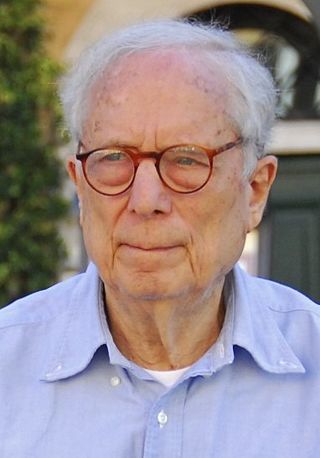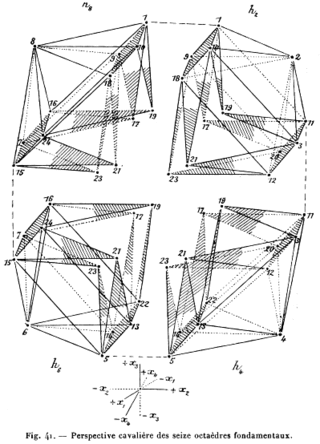
Robert Charles Venturi Jr. was an American architect, founding principal of the firm Venturi, Scott Brown and Associates, and one of the major architectural figures of the 20th century.

In the arts and in literature, the term avant-garde identifies a genre of art, an experimental work of art, and the experimental artist who created the work of art, which usually is aesthetically innovative, whilst initially being ideologically unacceptable to the artistic establishment of the time. The military metaphor of an advance guard identifies the artists and writers whose innovations in style, form, and subject-matter challenge the artistic and aesthetic validity of the established forms of art and the literary traditions of their time; thus how the artists who created the anti-novel and Surrealism were ahead of their times.

Postmodern art is a body of art movements that sought to contradict some aspects of modernism or some aspects that emerged or developed in its aftermath. In general, movements such as intermedia, installation art, conceptual art and multimedia, particularly involving video are described as postmodern.

De Stijl, also known as Neoplasticism, was a Dutch art movement founded in 1917 in Leiden. De Stijl consisted of artists and architects. In a more narrow sense, the term De Stijl is used to refer to a body of work from 1917 to 1931 founded in the Netherlands. Proponents of De Stijl advocated pure abstraction and universality by a reduction to the essentials of form and colour. They simplified visual compositions to vertical and horizontal, using only black, white and primary colors.
An art movement is a tendency or style in art with a specific art philosophy or goal, followed by a group of artists during a specific period of time, or, at least, with the heyday of the movement defined within a number of years. Art movements were especially important in modern art, when each consecutive movement was considered a new avant-garde movement. Western art had been, from the Renaissance up to the middle of the 19th century, underpinned by the logic of perspective and an attempt to reproduce an illusion of visible reality. By the end of the 19th century many artists felt a need to create a new style which would encompass the fundamental changes taking place in technology, science and philosophy.

Suprematism is an early twentieth-century art movement focused on the fundamentals of geometry, painted in a limited range of colors. The term suprematism refers to an abstract art based upon "the supremacy of pure artistic feeling" rather than on visual depiction of objects.

Neoplasticism, known in Dutch as Nieuwe Beelding or the new image, is an avant-garde art theory that arose in 1917 and was employed mainly by Dutch De Stijl artists. The most notable advocates of the theory were the painters Theo van Doesburg and Piet Mondriaan. Neoplasticism advocated for an abstract art that had been purified by applying the most elementary principles through plainly rational means. Thus, a painting that adhered to neoplastic theory would typically consist of only simple shapes and primary colors.

The Russian avant-garde was a large, influential wave of avant-garde modern art that flourished in the Russian Empire and the Soviet Union, approximately from 1890 to 1930—although some have placed its beginning as early as 1850 and its end as late as 1960. The term covers many separate, but inextricably related, art movements that flourished at the time; including Suprematism, Constructivism, Russian Futurism, Cubo-Futurism, Zaum, Imaginism, and Neo-primitivism. In Ukraine, many of the artists who were born, grew up or were active in what is now Belarus and Ukraine, are also classified in the Ukrainian avant-garde.

Harold Foss "Hal" Foster is an American art critic and historian. He was educated at Princeton University, Columbia University, and the City University of New York. He taught at Cornell University from 1991 to 1997 and has been on the faculty at Princeton since 1997. In 1998 he received a Guggenheim Fellowship.
Architectural phenomenology is the discursive and realist attempt to understand and embody the philosophical insights of phenomenology within the discipline of architecture. The phenomenology of architecture is the philosophical study of architecture employing the methods of phenomenology.

Vkhutemas was the Russian state art and technical school founded in 1920 in Moscow, replacing the Moscow Svomas.

Neo-futurism is a late-20th to early-21st-century movement in the arts, design, and architecture.

Karel Teige was a Czech modernist avant-garde artist, writer, critic and one of the most important figures of the 1920s and 1930s movement. He was a member of the Devětsil (Butterbur) movement in the 1920s and also worked as an editor and graphic designer for Devětsil's monthly magazine ReD. One of his major works on architecture theory is The Minimum Dwelling (1932).

Dutch architecture has played an important role in the international discourse on architecture in three eras. The first of these was during the 17th century, when the Dutch empire was at the height of its power. The second was in the first half of the 20th century, during development of modernism. The third is not concluded and involves many contemporary Dutch architects who are achieving global prestige.
Feminist theory as it relates to architecture has forged the way for the rediscovery of such female architects as Eileen Gray. These women imagined an architecture that challenged the way the traditional family would live. They practiced architecture with what they considered feminist theories or approaches. The rediscovery of architecture through feminist theory is not limited to female architects. Architects like Le Corbusier and Adolf Loos have also had their architecture reexamined through feminist theory.
Robert van 't Hoff, born Robbert van 't Hoff, was a Dutch architect and furniture designer. His Villa Henny, designed in 1914, was one of the earliest modernist houses and one of the first to be built out of reinforced concrete. From 1917 he was an influential member of the De Stijl movement.

New possibilities opened up by the concept of four-dimensional space helped inspire many modern artists in the first half of the twentieth century. Early Cubists, Surrealists, Futurists, and abstract artists took ideas from higher-dimensional mathematics and used them to radically advance their work.
Endless House is a conceptual work of architecture by Frederick Kiesler. Kiesler used the project to express an elaborate, personal metaphysics based on the concepts of ‘connectivity’, ‘correality’ and ‘biotechnique’. The project was an attempt to merge the spiritual and practical into a new housing typology.

Aleksei Mikhailovich Gan was a Russian anarchist and later Marxist avant-garde artist, art theorist and graphic designer. Gan was a key figure in the development of Constructivism after the Russian Revolution.
Krstić Brothers of architectural fame: Petar Krstić and Branko Krstić, were Serbian architects. They belonged to the "Serbian national style" as well as modernism of their time. Both Petar and Branko Krstić were also professors at the Faculty of Architecture of the University of Belgrade.













